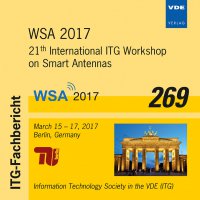Impact of Waveforms on Coexistence of Mixed Numerologies in 5G URLLC Networks
Conference: WSA 2017 - 21th International ITG Workshop on Smart Antennas
03/15/2017 - 03/17/2017 at Berlin, Deutschland
Proceedings: WSA 2017
Pages: 6Language: englishTyp: PDF
Personal VDE Members are entitled to a 10% discount on this title
Authors:
Eldessoki, Sameh; Wieruch, Dennis; Holfeld, Bernd (Fraunhofer Heinrich Hertz Institute, Berlin, Germany)
Abstract:
In 5G ultra-reliable and low-latency communication (URLLC) systems the use of multiple waveform numerologies is envisioned to meet varying quality-of-service requirements. Moreover, the waveforms will coexist with each other in a mixed numerology setup. Therefore, this paper studies the impact of cross-band multiple access interference of selected 5G waveform candidates on relevant URLLC performance metrics such as reliability. In particular, we consider a user of interest and time/frequency synchronous and asynchronous neighbouring systems. The waveforms considered are: Cyclic Prefix Orthogonal Frequency Division Multiplexing (CP-OFDM), Filtered Orthog- onal Frequency Division Multiplexing (F-OFDM), Universal Filtered Orthogonal Frequency Division Multiplexing (UF-OFDM) and Filter Bank Multi-Carrier (FBMC). We provide a link level abstraction to map the out-of-band emission of the waveforms' power spectral density to a packet error rate. Simulation results from our experimental setup may be used as a reference when designing a URLLC system according to desired performance criteria.


